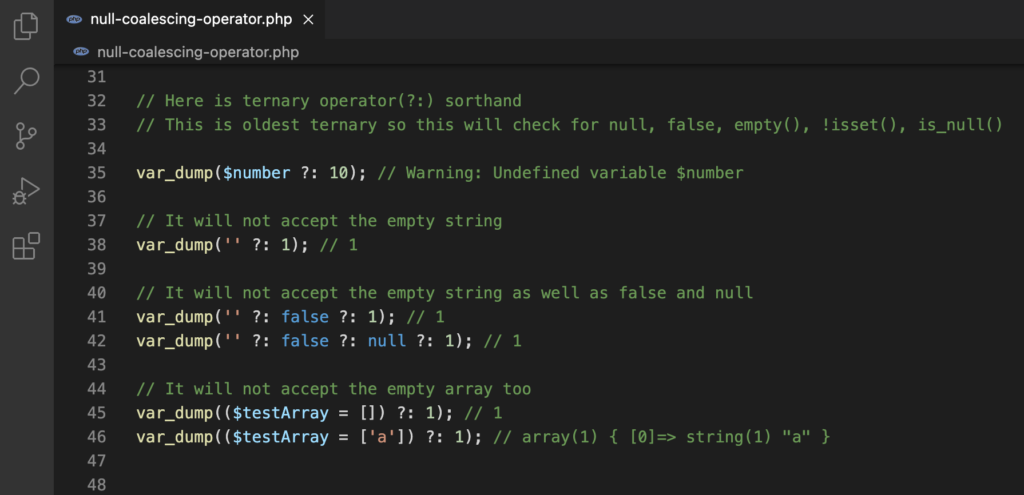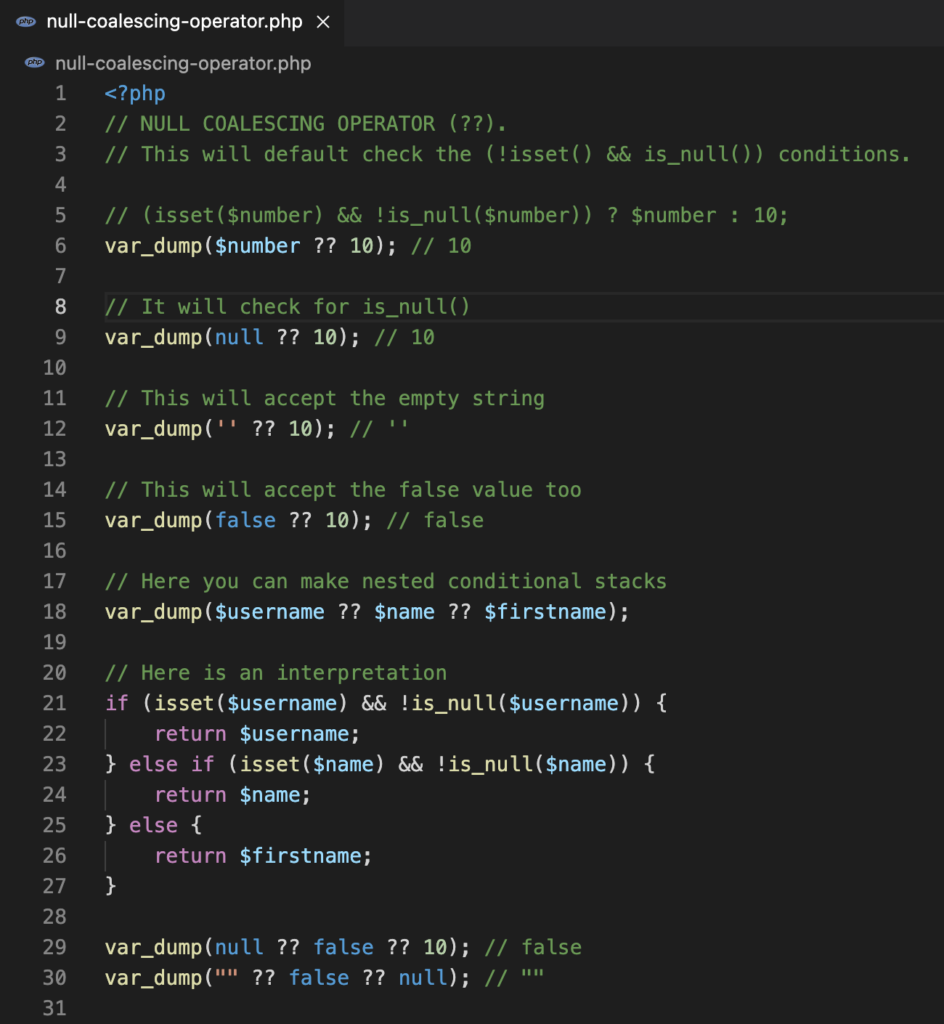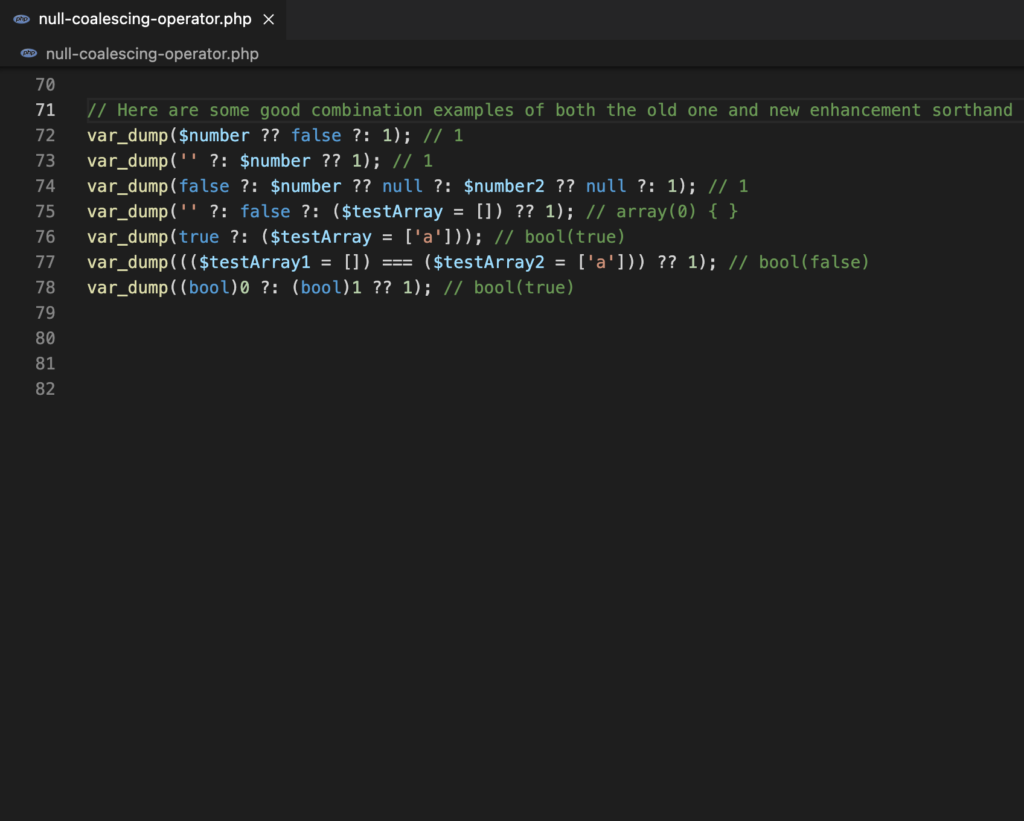Table of Contents
It has been 7 years since to release of PHP 7. Here is the tremendous enhancement of the ternary operator called as null coalescing operator.
Traditional Ternary Operator with shorthand (?:)
condition ? operand1 : operand2
condition ? (subCondition ? subOperand1 : subOperand2) : operand2
condition ?: operandThe ternary operator is I think most frequently used operator in the programming world. Here are the multiple ways that we can use the ternary operator. A ternary operator is a kind of operator where we can check multiple conditions in a single line.
Also, we can use the shorthand of the ternary operator,
The shorthand always checks for the null, false, empty(), !isset(), is_null().
Here are some examples of the ternary shorthand.

Null coalescing operator (??)
Here is an explanation from php.net
The null coalescing operator (??) has been added as syntactic sugar for the common case of needing to use a ternary in conjunction with isset(). It returns its first operand if it exists and is not null; otherwise, it returns its second operand.
So it is the default check for (!isset() and is_null()) condition. Here are some examples of Null Coalescing Operators.

Combine the Ternary and Null Coalescing Operator
What happened if we combine both operators in single condition checks? Here are some sample examples.

Do check out this great enhancement. This might help you with quick multiple conditions check and let me know the feedback in the comment section.
Happy Coding 🙂